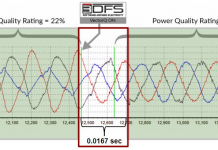It may be a stretch to call a company with a P/E ratio in the high 30s "cheap," but in the case of Quanta Services (NYSE:PWR), it’s a bargain.
 I won’t repeat myself about why electric transmission and distribution (T&D) investments are a good bet. Put simply, the grid has been long neglected, and improved long distance transmission is essential to bringing large scale renewables such as solar and wind onto the grid.
I won’t repeat myself about why electric transmission and distribution (T&D) investments are a good bet. Put simply, the grid has been long neglected, and improved long distance transmission is essential to bringing large scale renewables such as solar and wind onto the grid.
How does Quanta fit in? They build transmission line for utilities. When I ask industry insiders what company is best placed to actually string the wires or lay the cable, the answer is Quanta Services (the answer used to be InfraSource, until that company was acquired by Quanta.)
According to a recent article in the January/February issue of EnergyBiz (this particular article, on p.56 of the print version, does not seem to be online), Northeast Utilities (NU) signed a 6 year contract with Quanta in order to assure themselves access to T&D contracting services which they expect to be in short supply. According to Jim Muntz, a Senior Vice President at NU, "There are only a few contractors who have the capability to do contracts on this scale, so we determined that before it’s taken away from us, we would have to lock up their services for a number of years."
Another reason to expect growth in the industry comes from the same article. According to Tim Hope, a vice president of operations at ABB (another excellent transmission investment), "While other parts of the utility’s operations… looked to outsourcing solutions, T&D seems to be one of the last departments to embrace the concept." This means that the market for outsourced T&D can not only grow as utilities invest more, but also as they increasingly turn to outsourcing, either due to regulatory pressure or because of insufficient internal resources.
While I might have preferred the pure-play electric T&D opportunity of Infrasource before the merger, Quanta’s strategy of becoming a one-stop shop for infrastructure in natural gas, telecommunication, and broadband cable as well as power should serve it well if these industries continue to converge. The strategy may also allow the power division to draw on additional workers with similar skills from telecoms and cable, if or when the skills shortage outlined above takes hold.
Doesn’t that make a high-thirties P/E start to sound cheap? It does to Cramer and an analyst at Morgan Stanley. I’m hoping the current market decline will make even cheaper.
Click here for other articles in this series.
DISCLOSURE: Tom Konrad and/or his clients have long positions in PWR, ABB.
DISCLAIMER: The information and trades provided here are for informational purposes only and are not a solicitation to buy or sell any of these securities. Investing involves substantial risk and you should evaluate your own risk levels before you make any investment. Past results are not an indication of future performance. Please take the time to read the full disclaimer here.








